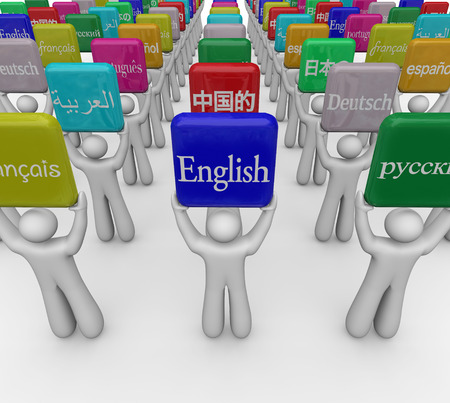
Professional Translation Complications: Two Rarely-Recognized, but All-Important Aspects
by Jim Dulin
At first glance, translation may seem straightforward: translate the words, conjugate the verbs, and put everything in the right order. Naturally, one must always acknowledge differences such as honorifics, cultural connotations, and the tone of the content. But translation dives deeper even than that, reaching into language structure, cultural influences, and the understanding and experience of each individual recipient.
As the world increasingly unites through globalization, more and more companies employ bi- or multilingual individuals. The wealth of cultural knowledge and diversity this brings presents an undisputed advantage to these companies. But comes with unique challenges.
1. First Language of the Speaker/Author
Translating the work of a native speaker presents a very different project than translating the work of a non-native.
In general, native speakers have a fluid and relatively relaxed style. They understand the cultural, regional, and generational connotations of the words and phrases that they choose. And intelligent individuals use this variety to their advantage.
Non-native professionals often have pristine grammar, large vocabularies, and an excessively formal style. They tend to speak and write literally, however, as they lack a thorough understanding of the varied connotations of their vast vocabulary.
Translators must understand not only the connotations of the words and grammatical structures they work with, but also the level and extent of understanding of the original user.
2. First Language of the Audience/Recipient
Conversely, translators must constantly consider the level and extent of understanding of their audience — and know how to convey the original meaning in the second language.
The challenge is twofold. Most people understand the challenge of expressing the original ideas in the words and context of the second language. But few stop to consider the fact that even this varies depending on the first language of the recipients.
If a translator is translating into Portuguese for native Portuguese speakers, she must have a firm grasp of colloquial phrases and cultural connotations.
If, however, she is translating into Portuguese for non-native Portuguese speakers, she must remember that they likely use and understand strict grammar but lack a thorough understanding of colloquialisms and a deep knowledge of the regional and generational connotations of particular words. The result is a literal version of the original work, interpreted by each recipient through the lens of their language training.
Conclusion
The dramatic increase in intercultural communication in the last twenty years has opened a significant need for competent professional translators. The task takes a thorough and astute understanding of not only each language, but also the native languages of both user and the intended audience. These rarely considered aspects and challenges of translation between professionals require careful attention to detail, deep understanding, and constant expansion of knowledge.
Please contact us at Keylingo for any translation needs, questions, or information!
Related Articles
AI-Powered LQA and Human Review: The Smartest Way to Scale Localization
Every multilingual project begins with ambition: the ambition to connect, to scale, and to meet global audiences where they are. But ambition often collides with the reality of manual language review processes that strain valuable resources. This friction delays launches and diminishes the agility brands need to thrive internationally. The answer is not replacing people…
Connecting Through Language: Why Global Brands Are Investing in Multilingual Video
In today’s digital world, attention is the most valuable currency—and it’s increasingly multilingual. For brands expanding across borders, creating content that resonates globally isn’t just a competitive advantage; it’s a business necessity. Whether you’re onboarding a workforce, educating customers, or entertaining the masses, your audience expects more than a translated script. They expect localized video…
The Formula for AI-Powered Automation: A Scalable Approach for Any Business
Automation is not just about implementing new tools—it’s about creating a culture of innovation and efficiency. The most successful companies don’t just adopt technology; they build cross-functional teams of problem-solvers who thrive on optimizing workflows, streamlining operations, and driving digital transformation. At Keylingo, we’ve spent years refining AI-powered automation strategies, testing tools, and improving processes.…
here
for you
We’d love to learn more about your translation and localization needs.